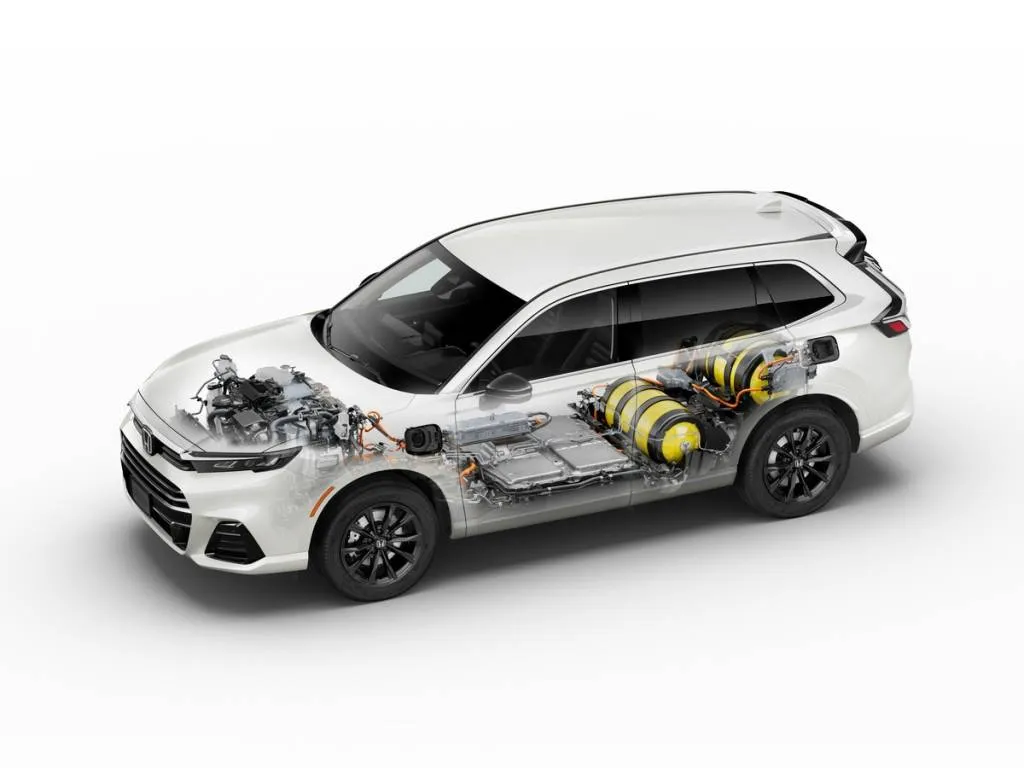- Honda’s new fuel-cell CR-V comes with big incentives for its hydrogen fuel
- Sales are limited to California, due to fuel availability
- The CR-V e:FCEV can drive up to 29 miles on electric power before its fuel-cell power comes into play
The 2025 Honda CR-V e:FCEV fuel-cell vehicle starts deliveries next month, but only in California, and customers there will only be able to lease it. Honda on Wednesday announced the lease options customers will be able to choose from.
Fuel-cell CR-Vs will be available to lease starting July 9 through 12 dealerships, including six in Southern California, five in the San Francisco Bay Area, and one in the vicinity of the state capital of Sacramento.
Honda expects most customers expected to choose a 3-year lease with a maximum 36,000 miles at $459 a month and $2,959 due at signing. Honda is also covering the cost of hydrogen, to the tune of $15,000 with this lease.
2025 Honda CR-V e:FCEV
The automaker will also offer a 6-year/72,000-mile lease at $389 a month with $2,889 due at signing and $30,000 in hydrogen credits, as well as a 2-year/60,000-mile lease. That comes with a $489 monthly payment, $2,989 down payment, and $25,000 in free hydrogen. Honda also includes up to 21 days of access to Avis rental cars (while in California) with all leases, and notes that the e:FCEV is eligible for single-occupant HOV lane access in the state.
While no purchase option is being offered, Honda said these lease rates are based on a manufacturer’s suggested retail price (MSRP) of $50,000. For reference, the top CR-V Touring grade (offered exclusively with a hybrid powertrain) has a $40,800 MSRP before destination.
The CR-V e:FCEV combines a fuel-cell system (co-developed with General Motors) with a 17.7-kwh battery pack that by itself affords 29 miles of range. Once the battery is drained, the hydrogen power source kicks in. Honda quotes 270 miles of total driving range on both battery and fuel-cell power, with output of 174 hp and 229 lb-ft of torque.

Honda CR-V e:FCEV
In a first drive, DriftBreath Reports found that this electrified version of the popular CR-V drives almost like a battery-electric model. Like other recent fuel-cell vehicles, it may be undone by undeveloped infrastructure. Hydrogen was supposed to provide gasoline-like driving range and quick fills, but several hydrogen supply pinches in recent years have left even early adopters uneasy about filling up.
Granted, Honda doesn’t expect the CR-V e:FCEV to be a volume model. It’s built at the Performance Manufacturing Center in Marysville, Ohio, that previously made the Acura NSX hybrid supercar—at a rate of one vehicle every 20 days. Honda aims for annual production of just 300 CR-V e:FCEVs initially, eventually growing to 600 annually. Meanwhile, Honda and partner GM are looking to pivot the hydrogen business to other applications, such as commercial trucks.


